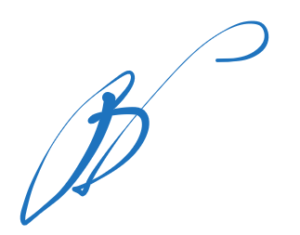-
The key signs & metrics
to "rain check" your exercise!
I usually wake up in the morning and exercise for an hour. Recently, I woke up feeling not quite myself. Although I didn't necessarily feel sick, I lacked my usual energy and motivation for exercise. This feeling is unusual for me, as I rarely fall ill to upper respiratory infections - about once every 18 months. I know that if I exercise while harbouring an infection, it could amplify the infection, ruling me out of exercise for a week or more.
However, I don't check my resting HR, blood pressure, or temperature, and start my monthly fitness and health check session.
💓 Test: A 45-minute stationary bike calibrated for accurate power (watts).
💓 I push as hard as I can, maintaining and policing my heart rate between 145-150 bpm, gradually reaching this zone within the first 5 minutes. This heart rate represents approximately 85% of my maximum effort.
💓 I am focused solely on monitoring my heart rate only. I exert maximum effort within this range and assess my average power output afterwards.
💓 I reached my heart rate testing zone quicker than usual. While I could hold my heart rate zone, my legs felt a little clunky, and I felt hotter than usual despite an industrial fan blowing directly at me.
💓 The 45-minute test finished, and I opened the file to review my results - the average power in watts was 178. My healthy power falls between 320-330 watts. Damn it, I know what would come next.
The next morning, I woke up with a sore throat, elevated temperature, nasal congestion, and feeling generally lousy. My typical waking heart rate of 40 was now 60. At this point, I knew that if I exercised over the next five days, it would increase my recovery time by 4-8 days. I was out of commission.
If I had assessed my resting heart rate the morning of the test, it would have been 10-15 beats higher than usual. Further, my blood pressure would have been elevated by 10-15 mg, and my temperature would have been elevated by ½ a degree. If I had skipped exercise on that day, I would have been 100% in three days. You'd think I would have known better - moron!
💓 Measuring your heart rate in beats per minute manually via your arterial pulse or a reliable heart rate metric when in full health can give you your baseline. If you feel slightly off, measure your heart rate. It can help you decide whether to take a day's break or continue training.
-
Is salt therapy (halotherapy) worth it?
Salt therapy, also known as halotherapy, involves inhaling pharmaceutical-grade dry salt in a comfortable, controlled environment. As you sit back and relax, a device called a halogenerator will disperse microscopic salt particles into the room. You'll inhale these tiny particles deep into your airways and lungs, and they will also be absorbed through your skin. Salt rooms have been popping up in recent years. With a centre near me, and as a fan of salt, I thought I'd give it a crack!
What makes salt effective?
Dry salt is highly absorbent and possesses natural anti-inflammatory and antibacterial properties. Experts say that when inhaled, the salt thins and liquefies mucus, making it easier to expel, along with pathogens, debris, and pollutants. Additionally, dry salt particles gently stimulate the body’s natural cilia movement, which helps keep the airways clear of mucus and dirt, facilitating easier breathing. In essence, salt acts like a toothbrush for the airways, clearing out mucus, debris, and pathogens. For the skin, dry salt can absorb impurities, regulate the pH level, and promote your skin’s "good" bacteria. In the article above and the recovery from upper respiratory, I benefited from practising a saline neti pot a few times a day.
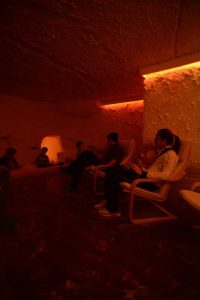
The experts claim salt therapy can;
🧂 Improved breathing and respiratory health
🧂 Relief for existing skin conditions
🧂 Enhanced immune system functionality
🧂 Anti-inflammatory properties
🧂Reduced stress through relaxation
My session.
I sat in a comfortable room for 45 minutes with the temperature set around 20°C. I had the opportunity to use my phone, but it was encouraged that meditation was a better option. I flicked through a surfing magazine. There was no odour, and I did find myself a little thirsty. I noticed a little film of salt on my skin - the same as not showering after a surf. I guess I enjoyed the experience, but with no great punch, I don't think I'd return. As I believe in the health benefits of salt, I'll continue adding clean, unprocessed salt to food and a tiny pinch of bicarb soda in my training water bottles.
-
Can you plank?
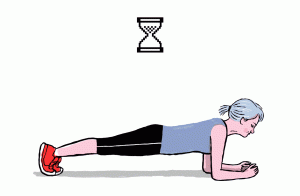
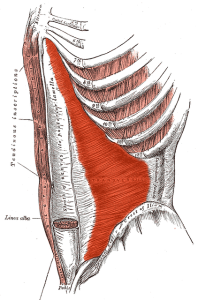
Resistance exercise serves various purposes, including sport-specific functionality, muscle size increase, and improvement in postural stability, balance, and coordination for most individuals. A strong core and functional hip hinge are essential for supporting the lower back during movement.
One example of a resistance exercise is the plank, which involves balancing on your toes and forearms while keeping the rest of your body off the ground. It's important to maintain a neutral spine and keep your head, torso, and legs aligned during this exercise. The plank is considered an isometric exercise because it involves contracting the core muscles in a fixed position.
Unlike some other core exercises that primarily target the superficial abdominal muscles, the plank engages deeper core muscles such as the transversus abdominis, rectus abdominis, and oblique muscles.
Leading exercise physiologists offer the following standards when holding a strict plank - seconds held!
How do you compare?
Male <15 & 50+
Female <15 & 50+
Male 15 - 49
Female 15 - 49
Category
<10
<6
<15
<10
Indigo
20
15
30
25
Teal
40
30
50
35
Bronze
80
60
120
65
Silver
120>
90>
160>
100>
Gold
-
Att: Meatheads!
What is biltong?
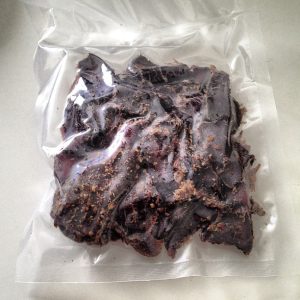
I enjoy biltong as a snack. My hunger is satisfied with a small portion, it doesn’t spike my insulin, it tastes great, and doesn’t throw out my appetite at my next main meal.
Biltong is a delicious dried meat snack made from big chunks of beef steak marinated in vinegar and spices such as black pepper, coriander, and sea salt. The marinated steaks are then hung in a room with circulating air to slowly dry them out at ambient temperatures, keeping the biltong soft and tender during the drying process. Once dried, you’re left with air-dried steak, also known as biltong, that can be easily sliced into thin, enjoyable strips. Biltong is not jerky!
Most beef jerky is highly processed, with thin strips of meat covered in artificial sauces and cooked at high temperatures inside drying ovens. These commercial jerky choices, such as those found in service stations, are full of preservatives, sugars, and other unhealthy ingredients. True biltong is a healthier and tastier alternative to beef jerky. It contains no preservatives, dairy, gluten, soy, or added sugar.
Making your own biltong is the best option - CLICK HERE. However, the easiest way to introduce a healthy snack into your culinary week is through an Aussie company called Barbell Biltong. This is not a paid promotion, but I've ordered several batches and had them delivered straight to my door. The quality is top-notch!
-
When ya gotta exercise...
Just in case it’s too cold to exercise outdoors this winter, and you know you’ll feel a whole lot better if you exercise, particularly between the ears, consider the great man’s ‘daily’ exercise routine for 27 years straight.
💪 Jog on the spot for 45 minutes.
💪 50 Squats.
💪 100 Push ups on fingertips.
💪 200 Sit Ups
-
No Spotify, Podcasts or Netflix!
-

